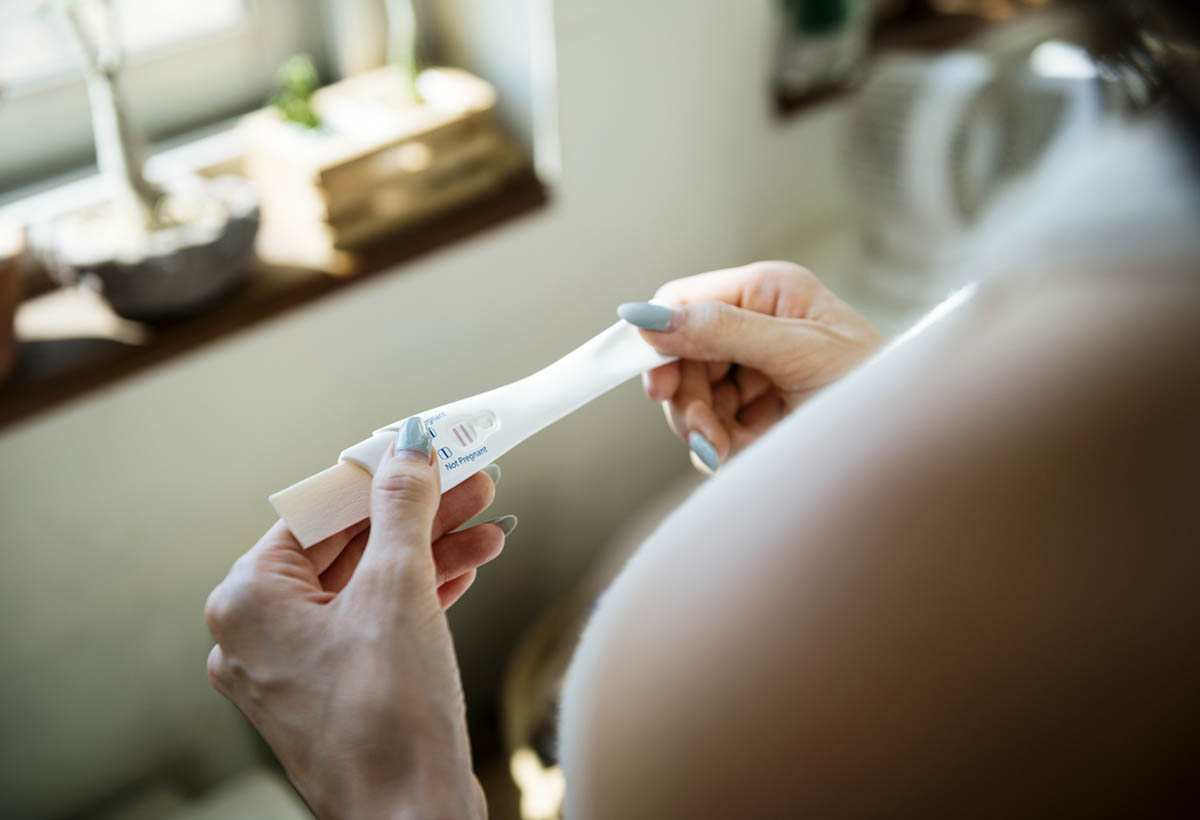Understanding fertility and the menstrual cycle is important to any woman of childbearing age — whether she is trying to conceive or hoping to prevent pregnancy. This article, written for Pregnancy Awareness Week, will take you beyond the basics and help you gain insights into both getting pregnant and preventing conception.

Your Menstrual Cycle
By the time a woman reaches adulthood and needs to make decisions about either how to get pregnant or how to prevent an unintended pregnancy, she will most likely have a basic understanding of how the female cycle works. You know that you experience menstrual bleeding every month, and that ovulation happens somewhere between two periods. But what causes all of this, exactly? Nothing short of a small miracle.
The average menstrual cycle lasts 28 days, but it is perfectly normal for a woman to have a different cycle length. You probably have menstrual cycles that somewhere last between 24 and 35 days, like most women. Only very few women have menstrual cycles that are shorter or longer than that, and those cases will be caused by medical problems that may need to be addressed before a woman can get pregnant.
A cycle begins with the first day of menstrual bleeding — during which the uterine lining that built up to accommodate a fertilized egg is partly expelled from the body, and partly reabsorbed. On average, menstrual bleeding will last between four and six days. Some women have a short menstrual flow, while bleeding can also last longer in some cases.
The menstrual cycle is a complex and clever system that is completely dependant on an intricate dance of hormones. A large number of hormones are involved in regulating the menstrual cycle, but the most important ones are:
-
Gonadotropin Releasing Hormone (GnRH)
-
Follicle Stimulating Hormone (FSH)
-
Luteinizing Hormone (LH)
-
Estrogen
-
Progesterone
Some of these hormones are produced within the hypothalamus in the brain, others in the pituitary gland, and yet others inside the ovaries. Though all of the hormones play essential roles (and an imbalance of any of them can lead to infertility), estrogen and progesterone — which are produced in the ovaries — can be said to be the most crucial ones involved in the menstrual cycle.
The Menstrual Cycle: Beyond The Basics
The menstrual cycle can be said to consist of two parts, the follicular phase and the luteal phase. We could also say that the menstrual cycle is made up of four parts, if we include the events of ovulation and menstruation. In the next section, we will take a detailed look at what happens during a menstrual cycle.

The follicular phase typically lasts between 10 and 17 days. It begins with the first day of your menstrual flow, which can last up to a week. While that is ongoing, around 15 to 20 follicles will be stimulated, on about day five of the cycle. One of those follicles will be dominant, and released as a mature egg during ovulation in that cycle. The follicular phase is dominated by estrogen, a hormone that stimulates follicles and helps the uterine lining grow. Estrogen also affects the cervix and cervical mucus.
Estrogen (or rather the active component, estradiol) peaks during the 24 hours before ovulation — before that one mature follicle is released. The peak of estradiol than triggers a surge in luteinizing hormone (LH): the signal that ovulation is happening! If you are using ovulation tests to try to get pregnant, it's interesting to know that your tests are actually looking for this surge in LH.
During ovulation, that one mature follicle that we talked about will release a mature egg, which is squeezed out of the relevant ovary and released into the fallopian tubes. Some women will experience the slight ovarian contractions that come with this event as ovulation pain — a reliable indication of ovulation for those women.
The luteal phase is the “second half” of the menstrual cycle. It is dominated by the hormone progesterone, and though its length can also vary per individual woman, it does so much less than the follicular phase. The most common luteal phase length is 14 days. Progesterone comes from a little “bag” that develops out of the ruptured follicle, and this is called the corpus luteum. Women who are using fertility charting with basal body temperature will be able to see the surge in progesterone by the fact that their basal body temperature has risen. This rise tells them that the luteal phase has commenced, and that ovulation is over and done with.
Things that tell you you are ovulating:
-
The surge in luteinizing hormone, which can be detected with ovulation tests (also called ovulation predictor kits).
-
The rise in basal body temperature, that tells you progesterone levels are rising. You won't know your temperature has slightly risen unless you use fertility charting. This method can be used to conceive more quickly as well as to avoid pregnancy.
-
Ovulation pain, which can come along with the ovarian contractions that happen as the egg is pushed into the fallopian tube.
-
Clear and stretchy cervical mucus. This “fertile cervical mucus” facilitates the easy entry of sperm, through the cervix into the uterus and then the fallopian tubes, where fertilization would take place.
If a woman didn't get pregnant during a cycle, the levels of both estrogen and progesterone will drop during the luteal phase. This, in turn, triggers the other hormones we talked about earlier — Gonadotropin Releasing Hormone and Follicle Stimulating Hormone — and cause a menstrual period. Then, you've got this story from the very beginning again. If the woman did get pregnant, yet another hormone, human Chorionic gonadotropin (hCG) will start being an important player. This is also the hormone that pregnancy tests measure.
Using Your Knowledge To Conceive — Or To Avoid Pregnancy
If you have made it this far, you have a lot more knowledge about the menstrual cycle than most women do. You can apply this knowledge whether you want to get pregnant or not.

Do you want to get pregnant? You can use one of the four methods mentioned in the last section to give you information about your fertile window. The fertile window, which culminates in ovulation itself, lasts for around six days. The fertile window starts before ovulation does because sperm can survive within the female reproductive system for that long!
Couples who engage in regular sexual intercourse, every two or three days throughout the menstrual cycle, can be sure to get pregnant quite soon if neither partner has fertility problems. If you wish to be a little more proactive, which many women who are trying to conceive do, you can use one of the following methods to gain information about your fertile window:
-
Ovulation tests or ovulation predictor kits. These detect that LH surge and tell you that NOW is the time to get active. You can start using ovulation tests seven days after the first day of your menstrual flow and be quite certain that you will catch your ovulation.
-
Fertility charting. This method will require you to take your basal body temperature each day. The basal body temperature is the lowest temperature attained during rest — in other words, while you sleep! Women who are charting their fertility will need to set their alarm at the same time in the early morning every day, take their temperature, and write it down.
-
Cervical mucus. Your cervical mucus alone is quite a reliable indicator of where in your cycle you are. Fertile cervical mucus, which you will notice during the days before ovulation and on the day itself, is clear in color and stretchy. During the luteal phase, cervical mucus will become thicker and white — this new structure prevents sperm from getting through.
-
Ovulation pain. Around 20 percent of all ovulating women will feel a slight pain on one side (in the ovary that is releasing the egg that month). If you are one of them, ovulation pain can be a reliable sign that you are fertile.
-
An ovulation calendar. This is a simple tool that mathematically calculates on which day you are most likely to ovulate. I'll link to an ovulation calendar in the link box below. To use an ovulation calendar, you will need to know the average length of your menstrual cycles and the date of your last menstrual period. If you do not know the length of your luteal phase, you can enter 14 days, since this is the most likely length of any woman's luteal phase.
Women who do not want to get pregnant actually have more to look at than those who do want to conceive. If you know your menstrual cycle intimately (by using either ovulation tests or fertility charting), you may like to use natural family planning to avoid conception. In this method, you do not have intercourse on the days that are part of your fertile window. The surest bet is to only have intercourse during the luteal phase.
Natural family planning can have a failure rate of as low as two percent, when used correctly. You may, however, prefer to err on the side of caution by using an additional birth control method:
-
Hormonal contraceptive methods like the pill, NuvaRing, and Depo Provera work doubly, both by preventing ovulation and by preventing implantation in the event an egg does slip by — because these methods affect the uterine lining.
-
Condoms trap sperm in, thus making fertilization impossible. They are the only method that also prevents sexually transmitted diseases.
-
Non-hormonal intrauterine devices (IUDs) prevent implantation by interfering with the uterine lining. They do not prevent ovulation, and are thus not the right choice for some people, who object to them for religious or personal reasons.
-
Permanent birth control methods like a tubal ligation, Adiana and Essure inserts, and the male vasectomy are meant to prevent pregnancy forever, in couples who are sure they do not want any more children.
- Photo courtesy of hammza on Flickr: www.flickr.com/photos/dhammza/5459115211/
- Photo courtesy of josefseibel on Flickr:http://www.flickr.com/photos/josefseibel/5537062003


Your thoughts on this